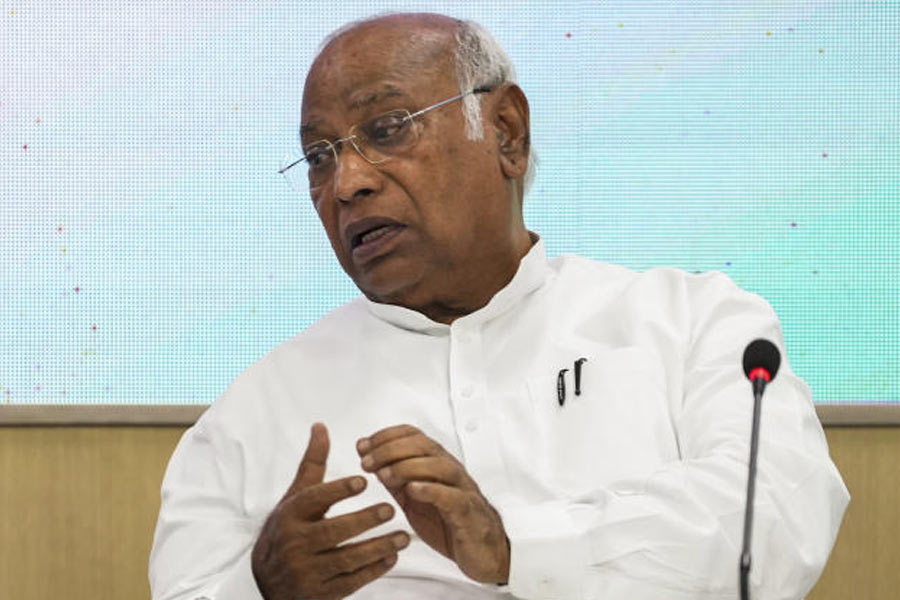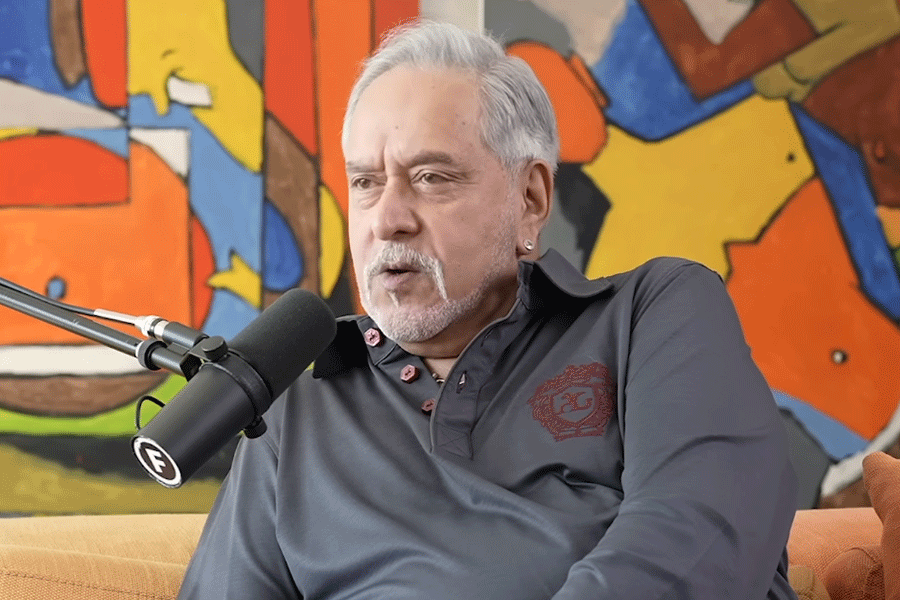 |
| EASTWARD HO: Dileep Singh Rathore (left in pic) on the sets of a film in Jaisalmer, Rajasthan; (below) shooting of a corporate film in Jaipur |
 |
The reading list gave it all away. When Alekh Sangal, an aspiring actor from Mumbai, got a call for a film audition, he knew very little about the project. But when he was urged to read Yann Martel’s Life of Pi before the screen test, he realised that the audition was for a role in director Ang Lee’s new film based on the best-selling novel.
Sangal is now awaiting the audition result. If it works out in his favour, he will join the rapidly expanding bandwagon of people who are making the most of an Indian summer. Suddenly, India is the favourite theme of the West. Films are being shot here like never before.
The projects are usually under wraps. Director Lee — still famous for his Oscar winning 2000 film Crouching Tiger, Hidden Dragon — was location scouting in India last month and auditioning for his new project. “Nothing can be revealed about the audition,” says the manager at Mehboob Studios in Mumbai where the audition took place.
What can, however, be revealed is the fact that the past few months have witnessed a steady influx of Western filmmakers and actors. Someone is in Jaipur, someone in Puducherry, and somebody has been shooting in Pataudi. And film industry sources stress that more people are expected to land up on Indian shores in the coming months.
Ang Lee was in Puducherry to look for a suitable location for a shoot. Speculation is rife that actor Russell Crowe will be in Varanasi in July for Sudipto Sen’s Amrit Kumbh, to be shot in Hindi and English. If all goes well, Johnny Depp will be in India sometime in the near future for Shantaram. Earlier this year, Julia Roberts had a two-week stay at Pataudi in Haryana, where she was shooting for Eat Pray Love. Last year, actor Gerard Butler was in Jaipur, apparently to look at locations for Mission Impossible IV, starring Tom Cruise. Angelina Jolie’s 2007 film A Mighty Heart was also mostly filmed in India.
The films are all thematically linked to India. Life of Pi is the story of an Indian boy from Puducherry, while Eat Pray Love chronicles a woman’s spiritual journey, including time spent in an Indian ashram. Shantaram: The Movie is the story of a convicted robber’s life in India after he flees from an Australian prison and lands in Mumbai.
Some believe that Hollywood’s eastward journey is linked to the mega success of Danny Boyle’s Slumdog Millionaire. “The movie opened doors for mainstream Hollywood which started looking at India with renewed interest,” says Sanjay Soni of The Crew, a production house handling location scouts in Rajasthan. His company has worked for Disney Channel’s 2008 venture The Cheetah Girls: One World.
Others hold that the eastern flavour has been developing over the years. “The change in mood has happened over a significant period of time,” says Mike Berry, chief of international production, Golden Tulip Films, Delhi. “Today, people are well read and well travelled. You can’t fool the audience anymore with props and sets,” says Berry, who has been a line producer for the past two decades and handled the location scouting for Eat Pray Love.
Though international films were shot in India even in the Thirties, there weren’t too many such projects. The Drum starring Raymond Massey was filmed in India in the 1930s and the 1950s saw Kim starring Errol Flynn and The River directed by Jean Renoir. Other international films shot in India included Octopussy (1983), The Far Pavilions (1984), Jungle Book (1994) and Bourne Supremacy (2004).
“Traditionally, western cinema has been interested in telling stories that take place in India but have identifiable white characters that a western audience can identify and empathise with,” says Dileep Singh Rathore of On The Road Productions, a production house with offices in Mumbai and Los Angeles.
Rathore says the characters played by Patrick Swayze in City of Joy (1992), Pierce Brosnan in The Deceivers (1988), Alec Guinness in A Passage to India (1984) and Julian Glover and Greta Scacchi in Heat and Dust (1983) were written for a western appetite. Soni too believes that the image of India “as a land of snake charmers and cows” has changed. “Today a Mission Impossible IV would have India as an important aspect of the film,” he says.
That’s probably why writer Jeffrey Archer is hoping for a cinematic version of a short story in his new book. The story is not only set in India, but its main characters are Indians as well. “The West sees India as a vibrant, growing market,” says Archer, who feels his story in And Thereby Hangs a Tale has the potential to be a Bollywood film. “Indians are open to taking in other peoples’ cultures and have a desire to achieve far more on the international scene.”
With the renewed interest in India, location scouting agents and casting directors are in great demand. The flurry of projects has opened the doors for line producers who receive the scripts from their western counterparts and are in charge of hiring production crew and equipment and day-to-day operations. “We have to get clearance from the information and broadcasting and tourism ministries and even help the foreign crew with their visa formalities,” says Raj Parihar, production in charge, Cine Dreams India, a Mumbai-based film production company.
Rathore’s company has handled the Darjeeling schedule of Peter Weir’s 2010 film The Way Back starring Colin Farrell and Ed Harris and Warner Bros’ 2006 film Blood Diamond, which was shot outside Mumbai. “We have even put together a production plan for Shantaram which was to be set up between Mumbai, Hampi and the Andaman Islands,” says Rathore. But the Mira Nair- directed film based on the Gregory David Roberts book is yet to take off.
The success of Slumdog Millionaire, which swept the Academy Awards in 2009, too has fuelled a demand for projecting Indian reality with all its grime and gore. “Global audiences are interested in the cultures of different geographies. If you showcase Asian countries it becomes a sure shot nominee for film festivals,” says Berry, who is a jury member for Academy Awards and Emmy Awards for 2010-2011.
The cost also works in favour of India. “If in the West filmmakers have to pay US$150 a day as minimum wages, in India they can get away with US$15,” says Berry. Line producer Rakesh Mehra, who did the initial location scouting for Slumdog Millionaire, says the West also benefits from the diversified production infrastructure that India boasts of. “We offer state-of-the-art studios, technology and an English speaking crew,” he says.
Most Indian production houses charge according to the budget of the project and length of stay in India. “A minimum fee of Rs 5,000 to Rs 10,000 a day is charged for sorting out all formalities and finding locations,” says Soni.
Right now, it’s a win-win situation. The West is in love with the East, and the East has no complaints. Kipling’s famous lines — stressing the disparity between the two ends of the world — may well need a rewrite.











